|
|
Holly Sumner |
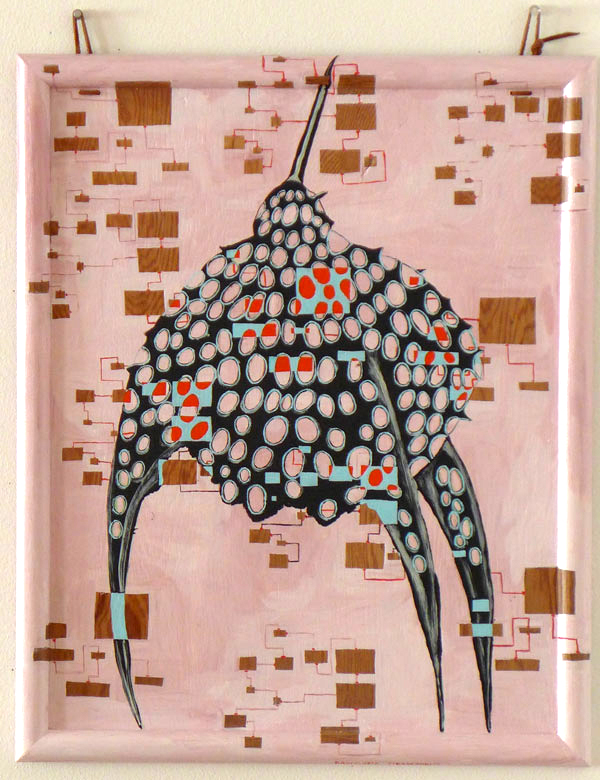
|
|
Kimberly Falk |

|
|
Danish landscape architects Schonherr |

|
|
Michael Foster |

|
|
Alan Ross |
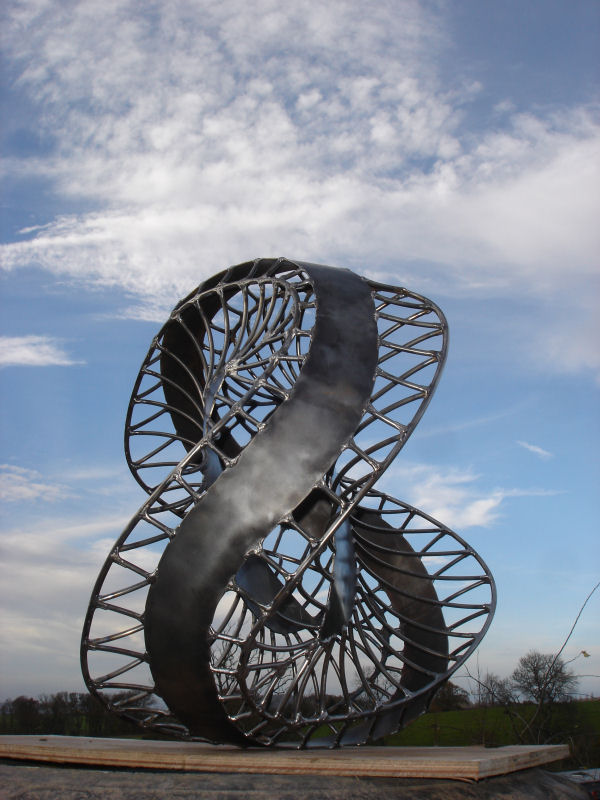
|
|
Miik Green |

|
|
Gerhard Lutz Gerhard Lutz has been working with Radiolarian inspired clay models since 1977. Most of his models are made from porcellain, but some also have a surrounding outer form made from stoneware (ceramic), contrasting the porcellain and giving the sculpture a different dimension. |
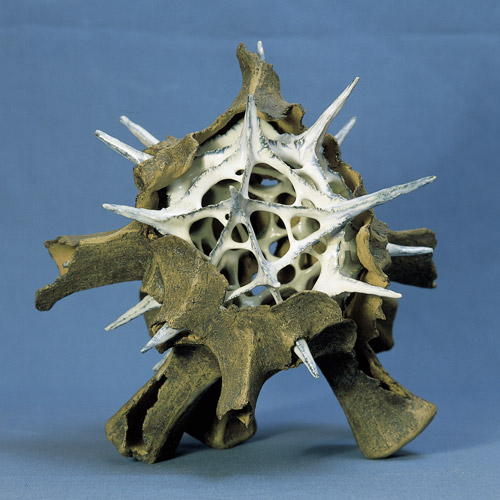
|
|
Robert Kraus "The idea was born years ago. Already in my first years as a student of Biology I fell in love with the beauty of plankton organisms and microscopical structures in general. To carve Radiolarians in lost wax pattern is one of the most intriguing challenges. Nobody can escape their elegance. People who have never seen or even heard of Plankton become completely fascinated by viewing and feeling these shimmering objects of art". Robert's biological jewellery is for sale. For more information please look at his homepage: www.pretiosae.de or contact Robert Kraus (by e-mail). |
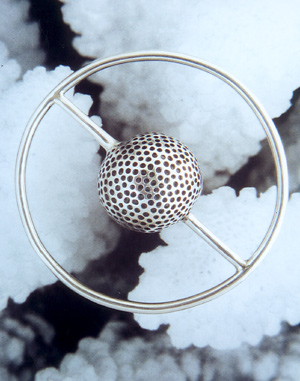
|
|
Eva Bjerke Eva Bjerke, ceramic artist, born 1950 in Sweden The exhibition "The Radiolarians" was made in 1999 and has been shown in Munkeby, Uddevalla and Bengtsfors in Sweden, and in Oslo and Larvik in Norway. The radiolarian sculptures are made in bone-white clay. The size (height) varies from 33 cm to 56 cm. Eva Bjerke loves radiolarians, and her dream is to study the variety of radiolarian shapes, enlarging them in sculptures to make people see the richness and beauty of the sea. "When I had a short job at the library of the Marine Research Station in Fiskeb"ckskil, I came to see some books made by Ernst Haeckel. They described the Radiolarians, with excellent lithographs made by A. and E. Giltsch, Jena (from about 1888). I was totally captured of the shapes of theese living beings from the microcosmos - so unlike anything else I had seen. I just had to make their forms in clay, maybe to help me understand that they really exist", she says. The radiolarian sculptures are for sale. For more information please contact Eva Bjerke. |

|
|
Barbara West Barbara J. West is a quilt art artist, born and raised in Canada. She displayed her first original quilt in 1998 in Canmore, Alberta, Canada and has not looked back since. She has been juried into National Shows for several years and recently won National awards for 3 of her art pieces, including First Prize for the large Innovative Quilt Category at the Canadian Quilters Association National Juried Show (2003) for the plankton quilt on this website. This quilt was selected by the Canadian Quilters Association as one of five quilts representing Canada to be sent to the World Quilt Festival in Nagoya, Japan in March of 2004 as part of their Invitational Show. |

|
|
Dagmar Borgwart Als ich 1975 im Botanischen Museum anfing und Pflanzenmodelle baute, ahnte ich noch nicht, welche Faszination die Kleinlebewelt auf mich aus ben würde. In meiner Ausbildung als Werbegrafikerin merkte ich bald, dass Naturstudien interessanter waren als Werbung. Der Blick durch Lupen und Mikroskope bei der Berliner Mikroskopischen Gesellschaft, Abbildungen zum Thema Mikrowelt und besonders Ernst Haeckels "Kunstformen der Natur", in dem die Radiolarien mich besonders gefangen nahmen, weckten den Wunsch, diese Wesen dreidimensional zu gestalten. (Text by Dagmar Borgwart) When I began my job building plant models in the Botanical Museum Berlin in 1975 I was not yet aware of how much the world of microscopic organisms would eventually attract me. As I was training for a career in advertising design I had however already noticed that studying nature was more interesting than creating ads. The desire to create fully 3-dimensional models of these small life-forms was stimulated by looking through the microscope at the Berlin Microscopy Society, and by pictures of the microscopic world, especially Ernst Haeckel's "Kunstformen der Nature", in which the radiolarians in particular captured my imagination. (Translation by David Lazarus) |
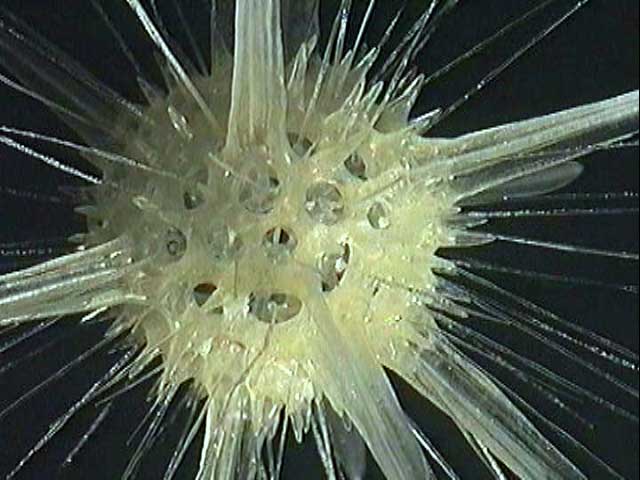
|
